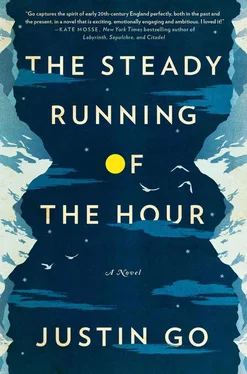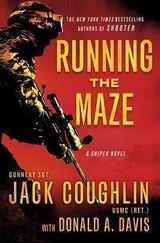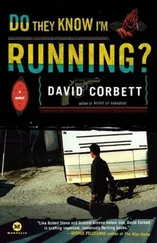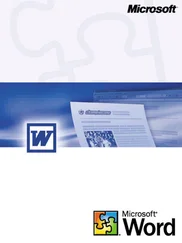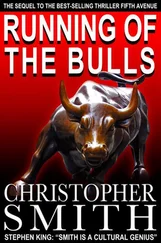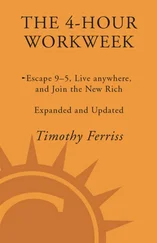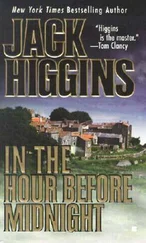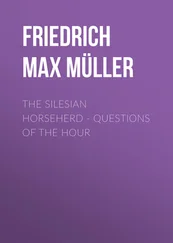— In London I believe I mentioned to you the many privacy clauses in the Walsingham trust. You may recall that such clauses precluded us from giving you certain details of the estate, particularly figures with regard to its value.
Mireille is watching me across the chessboard. She smiles and taps her rook against one of the black spaces.
— I felt concerned, Prichard continues, that without any such figures, you might be — insufficiently moved — so to speak, in pursuing your claim. Frankly, it struck me as unfair that you should have no idea what it is you stand to gain. So I called a meeting of the trustees and we’ve agreed to release certain details of the assets. Pursuant, of course, to the confidentiality agreement you already signed. You understand that all this remains strictly confidential. I presume you still don’t have e-mail access where you are?
— Not at the house—
— No matter, I can give you the figures over the telephone. You’re alone now and no one else can hear me on the line?
I stand up and walk into the kitchen.
— Yes. I mean, no one can hear.
— Excellent. I should explain that for legal reasons it’s simpler not to divulge the value of the trust’s UK assets. But I thought it sufficient to release to you the contents of a certain ‘Offshore Portfolio C.’ This portfolio includes some former assets of Mr. Risley, who you recall was Mr. Walsingham’s great-uncle and the originator of the estate. The portfolio holds principally bonds and tangible assets, some of these rather exotic. Mr. Risley required that it be held in certain proportions of foreign ‘treasury stock,’ precious metals and the like. These assets were kept overseas for tax purposes. Are you ready for the list?
— Yes.
— First are holdings in various foreign bonds. The purchase of these bonds is generally renewed with the maturation of other bonds, though the denominations vary considerably. At present — Swiss government bonds, due to mature in 2011: 32,452,950 Swiss francs. Japanese government revenue bonds, due to mature in 2012: 874 million yen. German thirty-year bonds, to be cashed in 2016: 43 million deutsche marks — why ever do they still write it in marks? Ah, here it is: 22,356,390 euros.
Prichard clears his throat. — There follows certain tangible assets. Gold bullion, in one-kilogram bars, PAMP Suisse, Credit Suisse: 462 kilos. United Kingdom gold sovereigns, principally Edward VII mintings, 1903 to 1909: 2,358 coins. Platinum bullion, PAMP Suisse: 3,825 troy ounces. A set of uncut diamonds purchased from DeBeers in 1905, at present insured for 6.3 million Swiss francs. Do I still have you?
I sit on a chair beside the kitchen table, half listening to Prichard. One of the chair legs is short and the seat rocks from side to side.
— Yes.
— There’s a bit of real estate. A villa outside Porto-Vecchio in southern Corsica, appraised at five and a half million euros. An olive farm with attached houses in Sant Llorenç des Cardassar, on the eastern bit of Majorca. Valued at approximately eleven million euros. Incidentally, that place is medieval, I’ve heard, and quite grand. But I’ve never been. It’s being run as a hotel at present—
— Majorca?
— I suppose Mr. Risley was fond of the Mediterranean. There’s also a small estate in Nyanza province, Kenya, but the title is disputed and there’s been no end to the headaches. In any case, it’s been removed from the portfolio. Now comes the bottom line. The aggregate value of these assets fluctuates a great deal, naturally. At the last valuation in January, Portfolio C was at 122,046,468 Swiss francs, 32 centimes, to be precise. Shall I convert that into euros, pounds sterling, or U.S. dollars for you?
— No. That’s all right.
— Naturally, any value attached to this portfolio is approximate to say the least. Should a beneficiary emerge, there would be significant tax, legal and administrative expenses upon distribution of such assets. These would detract from its value to some extent, though of course there are other assets to the estate. Have you any questions?
— I don’t think so.
— You take everything in stride, don’t you? Not to bat an eyelash at a hundred million Swiss francs, it says something of your character. Where exactly are you in France?
— In Picardie. About forty miles northwest of Amiens, near the coast.
— Have you found anything substantive?
— Those letters I wrote you about. I think the child was what split them up—
— Mr. Campbell, Prichard interrupts, I read the extracts you sent from those letters, and while they may support your theory, it remains conjecture. What we need is direct evidence. It’s the tenth of September and you must keep your eye on the calendar. A month may seem to you a good deal of time, but I don’t want you to panic when the deadline really looms. Have you a plan of investigation?
— I’ve just been following the evidence. I know everything up until 1916, when Imogen came here. But I can’t figure out what happened after that.
— Is that relevant? Finding more evidence of Miss Soames-Andersson won’t necessarily lead you to evidence of your grandmother’s maternity.
— It’s the best lead I’ve got.
— It may be, but you could be on the wrong trail entirely. Unless you find a new plan of attack, I’d advise you to return to London to resume your research from square one. Remember, all you need is one piece of paper. The right one. It need only prove Imogen Soames-Andersson is the mother of Charlotte Grafton. Everything else is immaterial.
We say good-bye. I give Mireille her phone back and sit down. She looks up from the chessboard at me.
— I’ve beaten you. I know every move you could make and I can beat them all. So we don’t need to play anymore.
— Let’s play anyway.
Mireille shrugs. — If you want. Why did your lawyer call you?
— He’s not my lawyer. He works for someone, but not for me.
— Oui, je comprends . But what did he say?
— If I don’t find something soon, I should go back to London.
Mireille frowns. — Is that all he said?
I pick up one of my pawns and move it forward two spaces. I look at Mireille across the chessboard.
— I’ll be rich if I get the estate.
— But you already knew that—
Mireille lifts her rook in her hand. The polished ebony glints in the firelight.
— Échec et mat .

19 December 1916
La Calotterie
Pas-de-Calais, France
The officers have the evening off. They sit huddled around a brazier in the disused barn that has served as company headquarters for the past week. In an hour they will take their dinner at an estaminet in the neighboring village. For now they wait.
Ashley is reading a book, a blanket snug around his shoulders. Jeffries plays a game of piquet with Bennett, each man dipping the cards toward the glowing brazier to read the suits and ranks in murky light.
A lieutenant named Ismay comes in, muddied and icy up to the waist of his greatcoat, his shift with the last working party completed. Ismay has recently been transferred from the Second Battalion. He is a tall man with dark hair and different-colored eyes — one brown and one light green — and the effect seems sinister to Ashley, as though Ismay is always gazing slightly beyond him. Ismay yawns and wraps a blanket around himself, dragging a chair up beside Ashley. Ismay begins shelling a sack of peanuts and props his boots on the brazier, the ice melting and sizzling on the iron.
— You’ll ruin your boots that way, Ashley says.
Читать дальше
